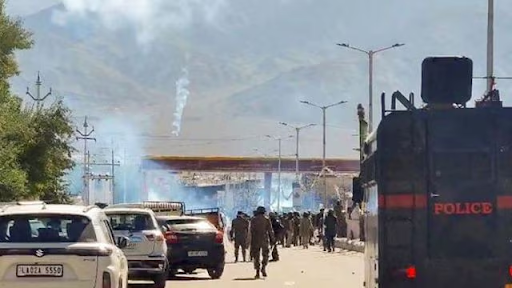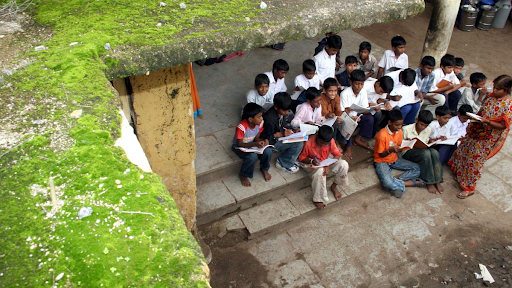Description

Disclaimer: Copyright infringement is not intended.
Context:
Details:
- The Ministry of Home Affairs (MHA) notified amended Rules under Section 55 of the Jammu and Kashmir Reorganisation Act, 2019.
- These rules define the roles and functions of the Lieutenant Governor in the administration of Jammu and Kashmir.
Changed role of Lieutenant Governor (L-G) of Jammu Kashmir:
- Appointment of Advocate-General and Law Officers: Proposals regarding the appointment of Advocate-General and other Law Officers must be submitted for approval to the Lieutenant Governor through the Chief Secretary and the Chief Minister.
- Prosecution Sanction and Appeals: Any proposal regarding the grant or refusal of prosecution sanction or filing of appeals must also be submitted to the Lieutenant Governor through the Chief Secretary by the Department of Law, Justice, and Parliamentary Affairs.
- Finance Department Concurrence: No proposal requiring the concurrence of the Finance Department concerning 'Police', 'Public Order', 'All India Service', and 'Anti Corruption Bureau' can be concurred or rejected without first being placed before the Lieutenant Governor through the Chief Secretary.
- Prisons and Prosecution Matters: Matters connected with Prisons, Directorate of Prosecution, and Forensic Science Laboratory are to be submitted to the Lieutenant Governor.
Powers and functions of LG in Jammu and Kashmir
Legislative Assembly:
- It is summoned by the Lieutenant Governor, and it can be prorogued or dissolved by him.
- Lieutenant Governor addresses the Assembly after elections and annually.
Executive Authority:
- Lieutenant Governor exercises executive functions.
- Assents to Bills passed by the Assembly, reserves some for President's consideration.
Financial Matters:
- Money Bills and expenditure require Lieutenant Governor's recommendation.
Council of Ministers:
- Chief Minister and Ministers appointed by Lieutenant Governor.
- Responsible for advising Lieutenant Governor on matters within Assembly's legislative powers.
Legal Matters:
- The Advocate-General appointed by Lieutenant Governor advises the government.
- Lieutenant Governor's discretion required on certain legal and administrative decisions.
Contingency Fund:
- Fund for unforeseen expenses managed by Lieutenant Governor on Council of Ministers' advice.
Audit and Reports:
- Comptroller and Auditor-General reports submitted to Lieutenant Governor and Assembly and he places it before assembly.
Emergency Provisions:
- The President can suspend provisions of the Act if administration cannot proceed as per the law.

|
Lieutenant Governors (LGs) and administrators in the Union Territories (UTs) of India:
A lieutenant governor is the constitutional head of five of the eight union territories.
- Appointment and Tenure:
- Both LGs and Amdinistarators are appointed by the President of India for a term of five years, subject to the President's pleasure.
- Administrators are typically senior bureaucrats from the Indian Administrative Service (IAS) or Indian Police Service (IPS).
- Union Territories with Elected Legislatures:
- Delhi, Jammu and Kashmir, Puducherry: These UTs have a measure of self-government with elected legislatures and council of ministers.
Here, the role of the LG is largely ceremonial, similar to that of a state's governor.
- They act as constitutional heads and exercise their powers in accordance with the advice of the council of ministers, except in matters reserved for the President's decision.
- Union Territories with Significant Executive Powers:
- Andaman and Nicobar Islands, Ladakh: In these UTs, the LG holds substantial executive authority, serving both as the head of state and head of government.
- They exercise wider powers due to the absence of an elected legislature.
- Administrator Role:
- Chandigarh, Dadra and Nagar Haveli and Daman and Diu, Lakshadweep: Administrators manage these UTs and are responsible for administration and governance.
- They do not have legislative powers and report directly to the Ministry of Home Affairs.
- Governor of Punjab as Administrator of Chandigarh:
- Since 1985, the Governor of Punjab has concurrently served as the Administrator of Chandigarh. This arrangement ensures administrative cohesion between Chandigarh and its parent state, Punjab.
- Functionality and Responsibilities:
- LGs: Responsible for upholding the Constitution, maintaining law and order, and overseeing the administration in consultation with the elected government where applicable.
- Administrators: Focus on day-to-day administration, implementation of central government policies, and developmental activities within the UTs.
- Distinct Powers and Functions:
- The distinction between LGs and administrators lies in the extent of their authority over governance, legislative matters, and their roles in the federal structure of India.
- LGs in UTs with elected legislatures maintain a delicate balance of powers, while administrators focus on administrative efficiency and development.
|
For understanding the special status of Delhi as UT refer the article :
https://www.iasgyan.in/blogs/the-complete-history-of-delhis-governance
Source:
|
PRACTICE QUESTION
Q. Consider the following statements regarding Union Territories (UTs) in India:
- The Lieutenant Governor (LG) of Delhi exercises substantial executive authority due to the absence of an elected legislature.
- Chandigarh is administered by the Governor of Punjab concurrently, ensuring administrative cohesion between Chandigarh and its parent state.
- Administrators of UTs like Lakshadweep focus on day-to-day administration and implementation of central government policies.
- Delhi, Jammu and Kashmir, and Puducherry have elected legislatures and councils of ministers, where the role of the LG is largely ceremonial.
Which of the statements above is/are correct?
A. only one
B. only two
C. only three
D. All four
Answer: B
|











